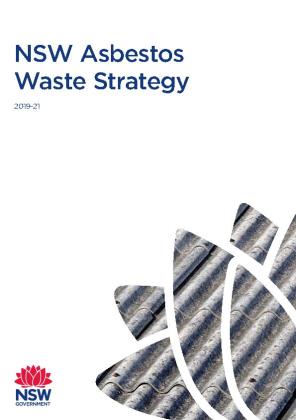Australia was one of the highest users of asbestos in the world. It is estimated that asbestos is present in one in three Australian homes. This has long term implications for our waste management system as asbestos is removed from our built and contaminated environments.
Most asbestos waste comes from renovation and development and includes legacy asbestos waste, such as pieces found in backyards and under houses. The risk of asbestos to people’s health can be managed with correct handling, storage, transport and disposal. However, environment protection agencies and local authorities across Australia are still challenged by illegal dumping and improper disposal.
The NSW Government remains committed to protecting people and the environment by improving asbestos waste management practices in NSW. Current actions, some initiated under the NSW Asbestos Waste Strategy 2019-21, fall under two strategies. These strategies are the waste focussed NSW Waste and Sustainable Material Strategy 2041 Stage 1 plan: 2021-2027 and the multi-agency asbestos focussed Asbestos in NSW: Setting the Direction 2021-22.
NSW Asbestos Waste Strategy 2019-21
The NSW Asbestos Waste Strategy (PDF 0.7MB) proposed innovative measures to reduce illegal dumping and unsafe disposal and promote lawful and appropriate disposal of asbestos waste. The measures were the result of social research, ongoing feedback from stakeholders, pilot programs and evaluation of existing processes.
We took a whole-of-system approach to promote good behaviours and discourage poor behaviours. Six interrelated approaches were developed to implement the strategy.


